Share this
Marcus Nelson (b. 1997, UK), lives and works in Berlin.Nelson’s artistic practice focuses on the medium of paint by depicting skinless, almost flayed bodies in ethereal landscapes. Often appearing beyond human in nature, he uses the body as a vessel through which to explore our interconnectivity through flesh, with visceral scenes giving way to psychological explorations of the soul. Inspired by philosophy that questions the different ways in which humans and animals can be interpreted, Nelson’s paintings explore these ideas in an abstract sense, allowing figuration to take shapes and forms that appear equally familiar and uncanny. Within each painting contains a sense of duality, where hope balances on the cusp of despair, and violence bleeds into intimacy. Emotional and physical landscapes are pushed to breaking point, and true vulnerabilities are exposed from within.
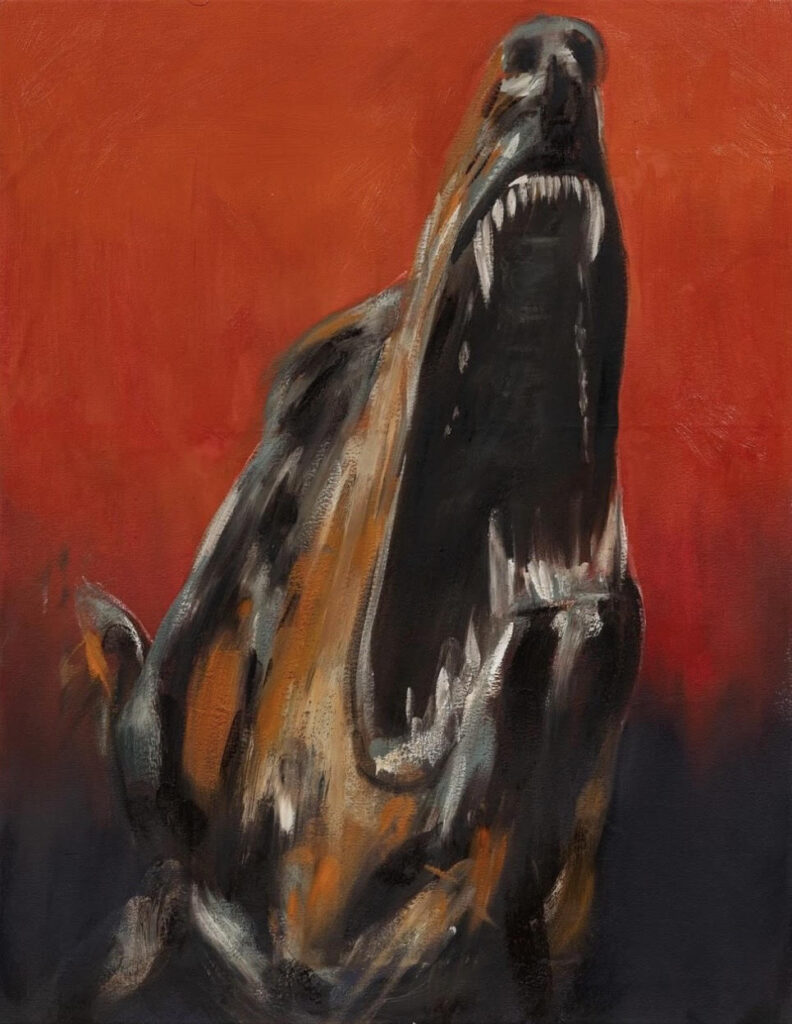
Hi Marcus! Thank you for sitting down with me. First question that I always ask. How does a regular day look like for you in London?
Well, funnily enough I’ve actually just moved to Berlin. But I guess a typical day for me would involve working out, then getting into the studio around midday. I generally like to keep my time in there to around four hours a day or less so I don’t overwork anything, but sometimes I don’t get back until late in the evening if I’m on a roll. Since moving to Berlin I have also been exploring the night life a lot as I feel it really feeds my work.
Gotya, so what brought you to Berlin?
I connected with Berlin in a deep way when I first visited years ago, and ever since then I knew I would move there at some point. I think it’s the strange combination of calm and chaos that I find so attractive. I still love London deeply as this is where I found myself as an artist, but there are less distractions for me in many ways in Berlin, which is allowing me to work harder and push things in a more experimental way in the studio.
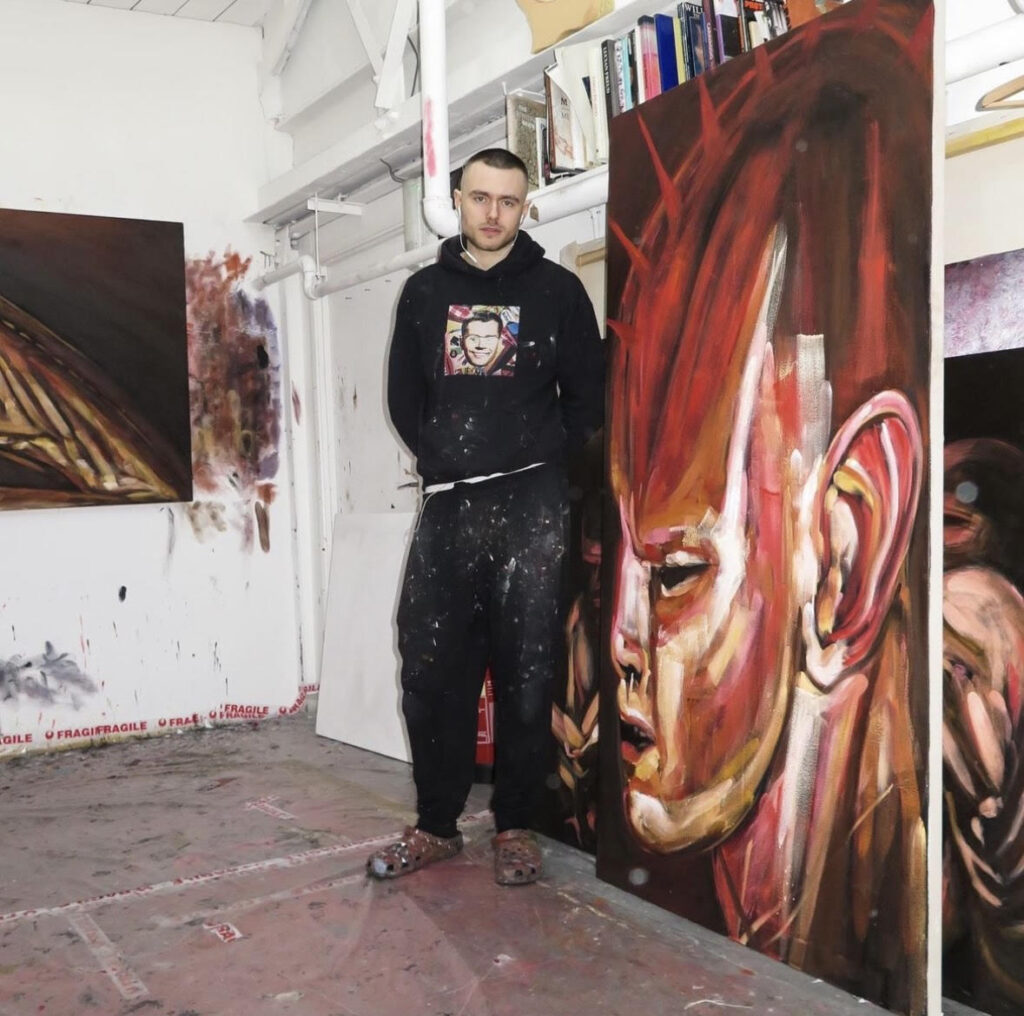
Alright, let’s jump into it! When did you start painting? And when did you start taking being an artist serious?
Ive been making art in one way or another my whole life, when I was a kid I used to draw a lot. Its always been one of a small handful of things that get me out of my own head. After I left school I nearly went into acting, but bailed on it last minute to go to art school. I began to take “being an artist” seriously when I started being offered opportunities…I guess this was the moment I thought I should continue and see how far it could take me. However eventually, it just became an addiction to getting better at painting, and this has become the real driving force behind me continuing to make work – I think a lifetime isn’t enough time to really understand the medium.
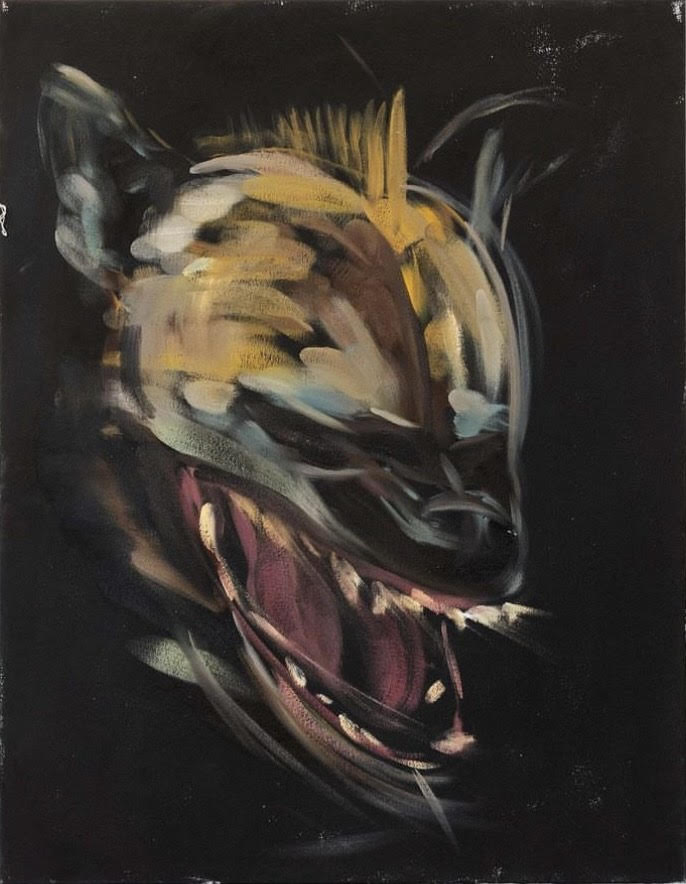
What’s your inspiration behind the various scenes in your work? And how do you come up with them?
I read a lot and books really inform the themes I look at within my practice. I guess you could say my inspiration comes from the violence I see in the world around me; I have always been fascinated by the idea of some kind of “truth” being released through violence within enclosed spaces, whether that be an MMA cage, a bullring, a battlefield or one’s own mind. These environments, however unsettling, however abhorrent, reveal something about our nature in the way we interact with them. There is a lot of performance that I do privately, with my own body that feeds the images, but I don’t consider my work autobiographical in the slightest. I just know how to use my own body to get the results I want – like a vessel.
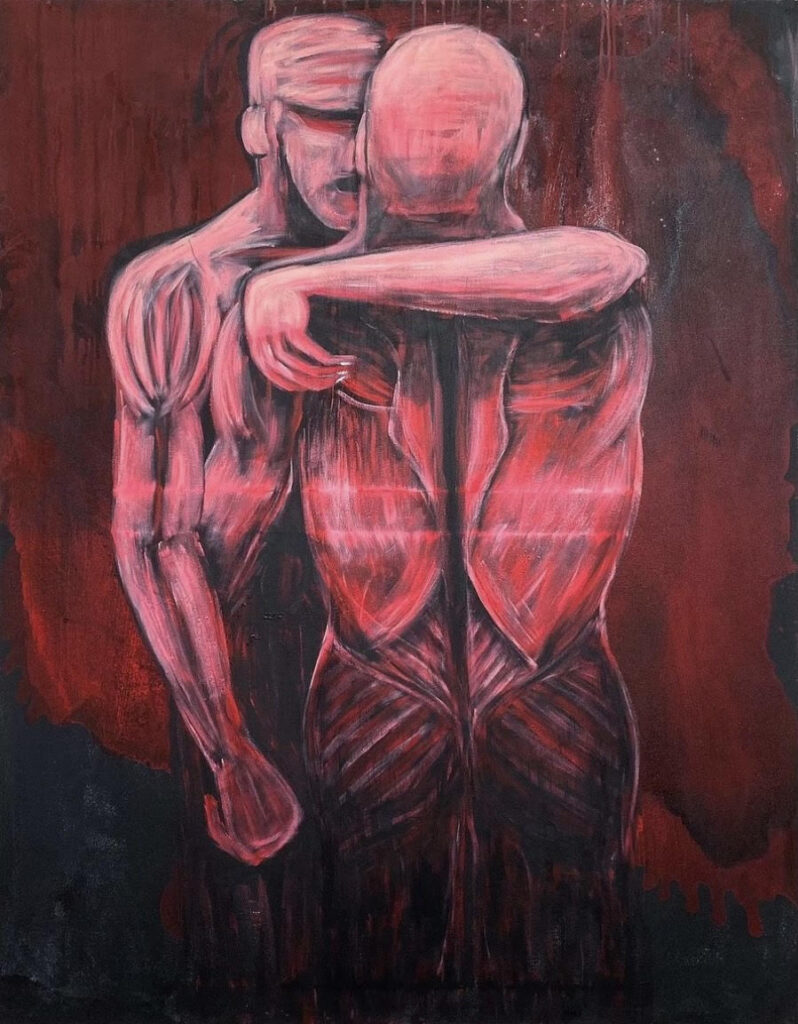
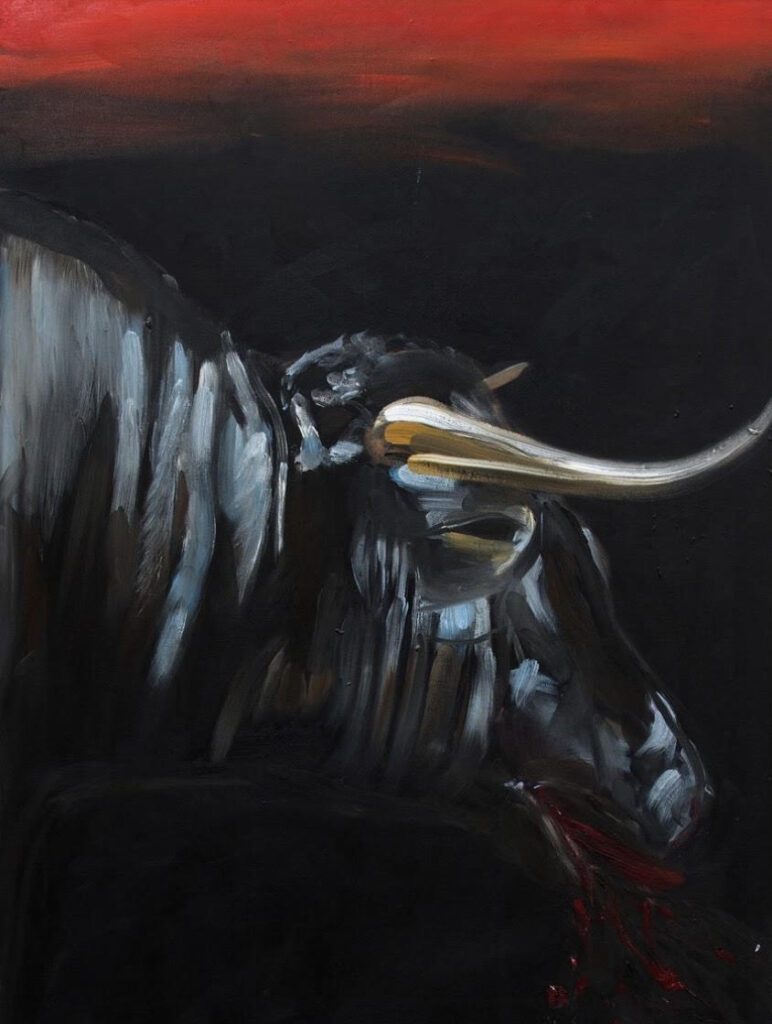
Same thing goes for the various animals, people and motifs. Who are they?
They are whoever and whatever you want them to be.
Strong men are the protagonists of many of your paintings. Can you tell me about what masculinity means to you? And how it’s documented in your work?
Because I reference my own body so much, and of course because I am a man, the images have this masculine edge to them, and they always will do in that sense, but I do consider them increasingly more androgynous in nature. I think its been well documented that I have this complicated relationship with my own sense of masculinity, so thats always going to be something that gets played out in the work but I don’t have any answers, and thats probably a good thing.
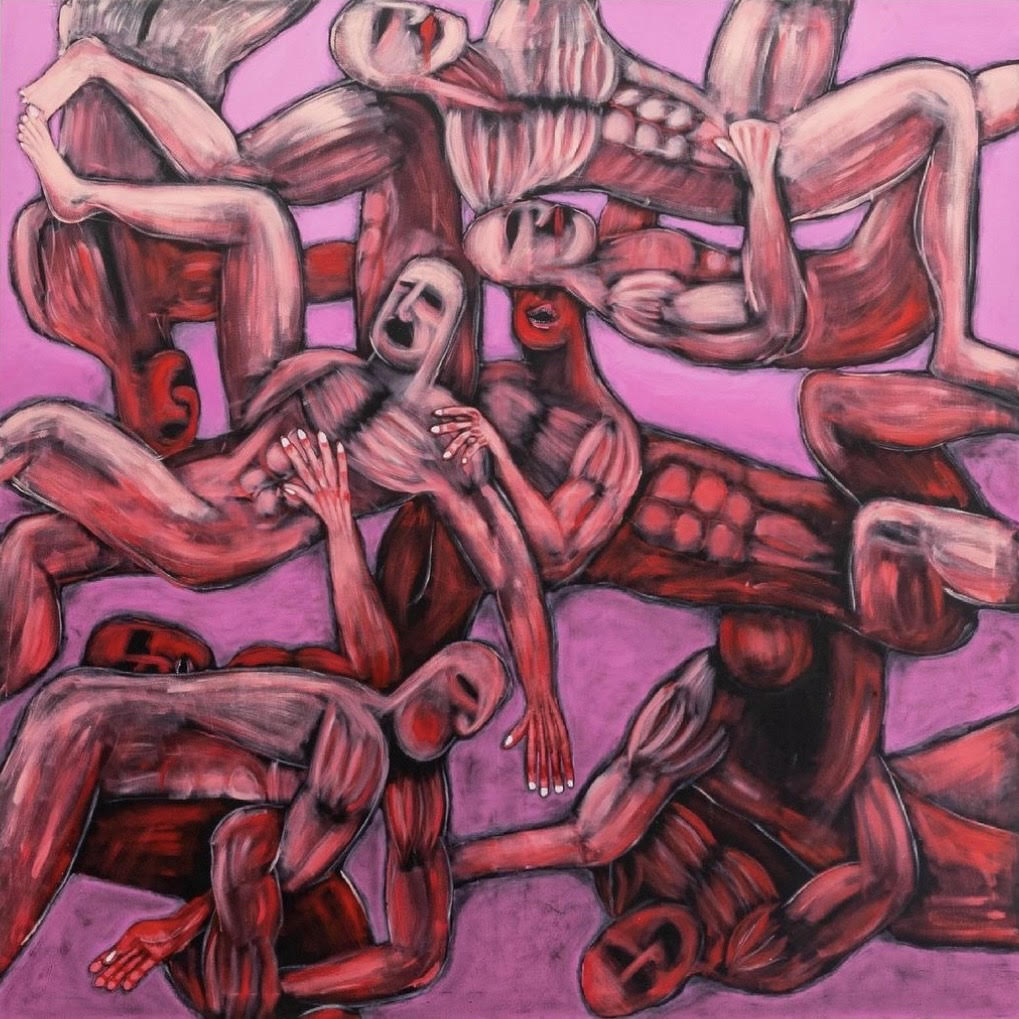
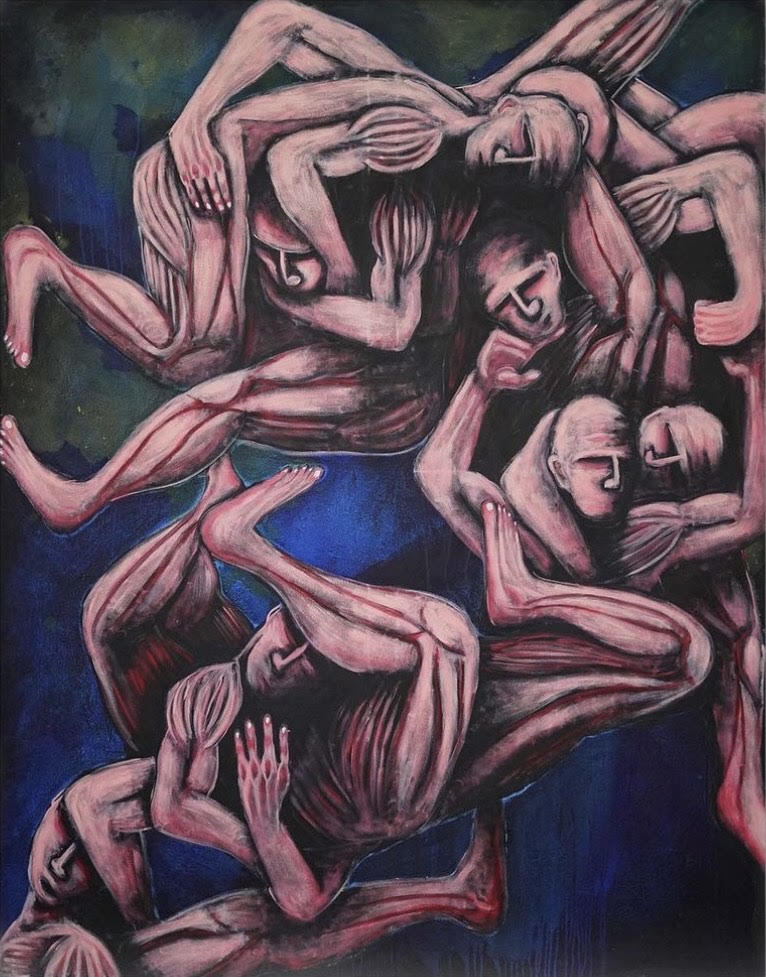
While we’re on the topic of masculinity. I know that besides painting you’re also an avid boxer. When and how did you get introduced to boxing?
Ive been involved in martial arts since I was very young, but fell out of it as a teenager when I started getting distracted by other things. I moved to London to go to art school and thats where I met my girlfriend, who is a born and bred Londoner and had close connections with Islington Boxing Club- a well known gym in North London. When I first got to London I wasn’t in the best place and she suggested I go to the boxing gym to get me into a more positive environment. I remember initially being very reluctant to go but ever since my first session I fell in love with it in a way I can only compare to my love of painting. That was six years ago and today its still an equally important part of my life.
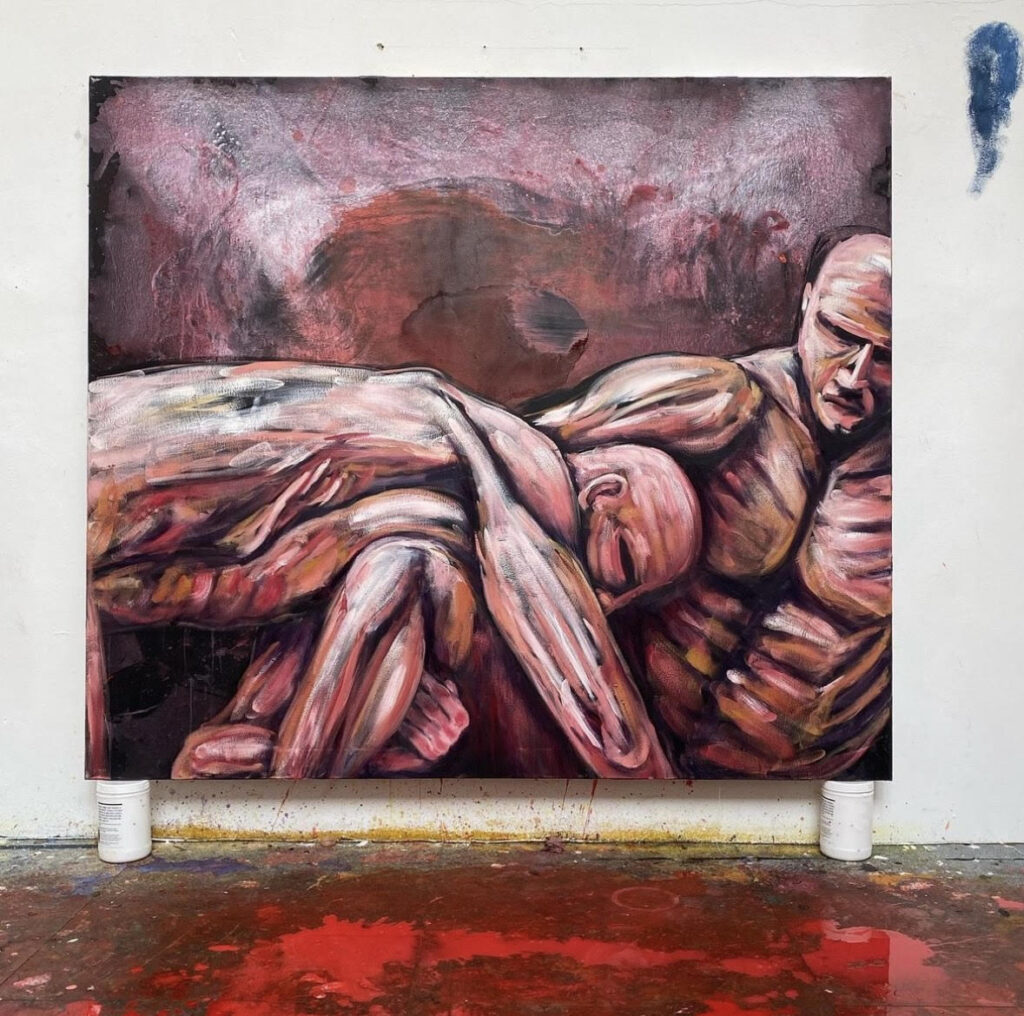
I read somewhere that you’ve always been drawn to dark and difficult subjects, as well as having an interest in mental illness. Why do you think that is?
Well, I see so much violence and pain in the world around me that I’ve always felt like, what’s the point of discussing anything else? To me its in the most difficult of subjects that you find the most honest answers. Although, I would say this approach has definitely been a hinderance to my career at times as I have had many situations where people have labelled the work as “too dark”, and one time I even had a painting get banned from entering China for a group show there. I understand that some people don’t want to be confronted by unsettling imagery, but it has always surprised me that, given how much violence we see globally, a large portion of the art world is reluctant to engage with this type of work. Recently I was having a conversation with another artist and we were discussing this very topic, he said to me that the real horror are the things we can’t see, the things that lie under a veneer of beauty or safety, and this is something that has really stuck with me, because I think my work is all about ripping this veneer off, like a scab, revealing the fleshy tissue underneath. In this way I feel like, although it may be uncomfortable for some people to look at, at least my work is giving you discomfort in an honest way.
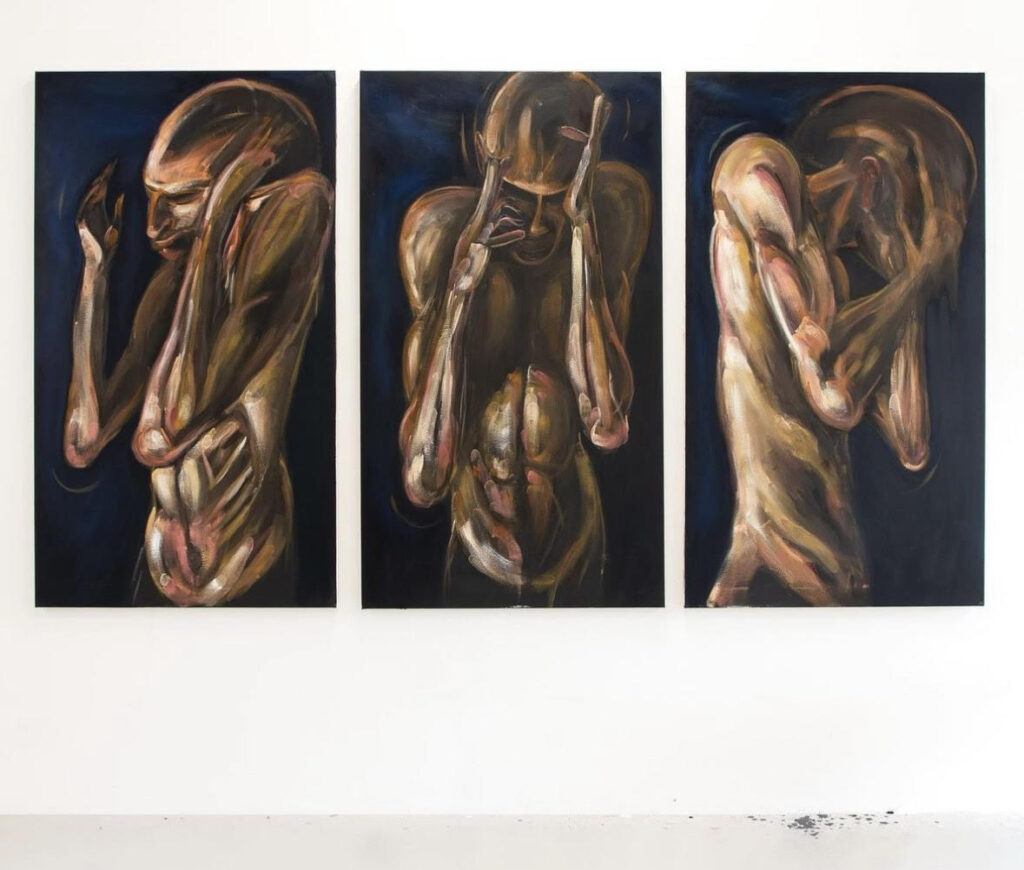
I feel like this is a perfect time to ask this next question. So, in 2018 you co-founded “Boys Don’t Cry” with Brooke Wilson, an art collective that raises public awareness regarding male mental health and suicide. Can you tell me about that as well?
I formed Boys Don’t Cry, with Brooke in 2018 whilst we were both at art school together. At the time in the UK there was almost zero public discussion around the topic of male mental health, and given that this was a very personal issue for the both of us we wanted to try and do something about that. At first it wasn’t even supposed to be a “collective” but we started to meet so many amazing artists making work around the topic that the group naturally grew in size. We aren’t as active now but the community is still there and we all continue to support each other and hang out as much as we can.
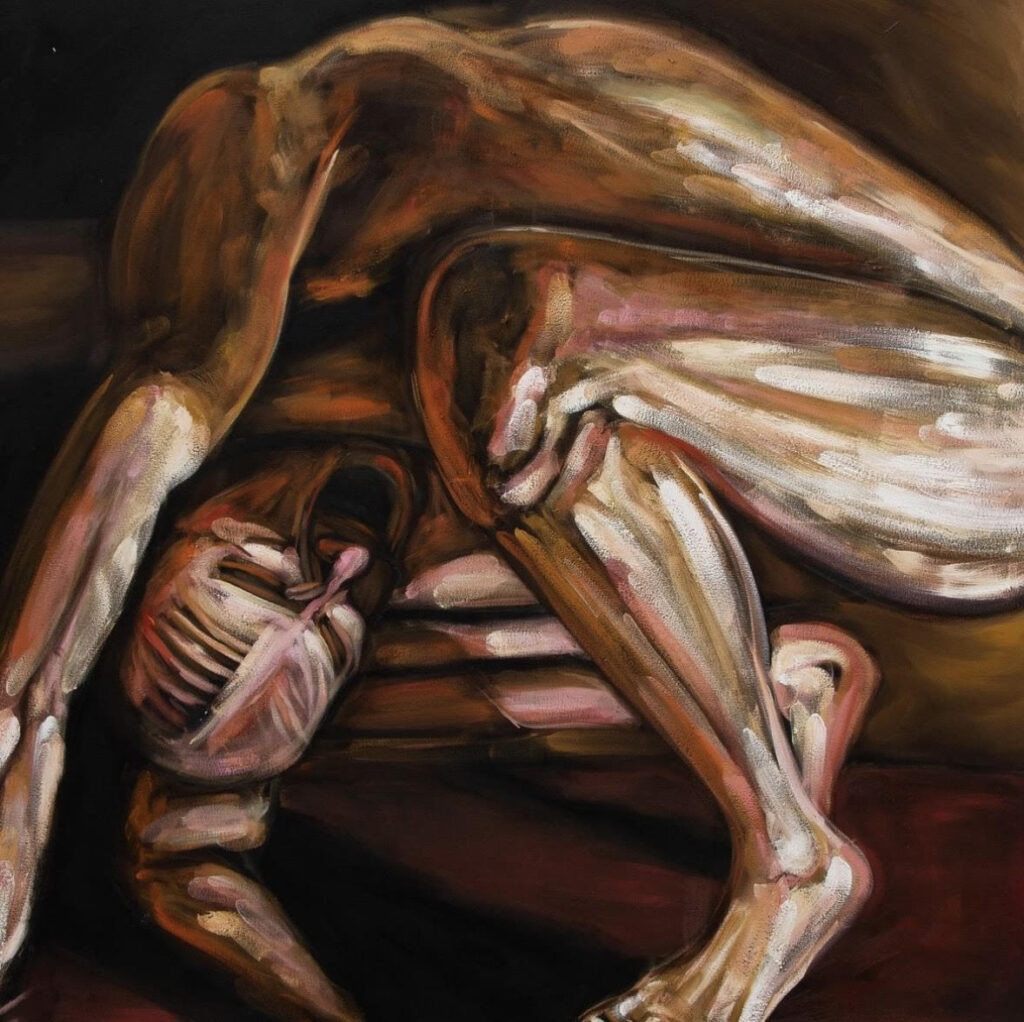
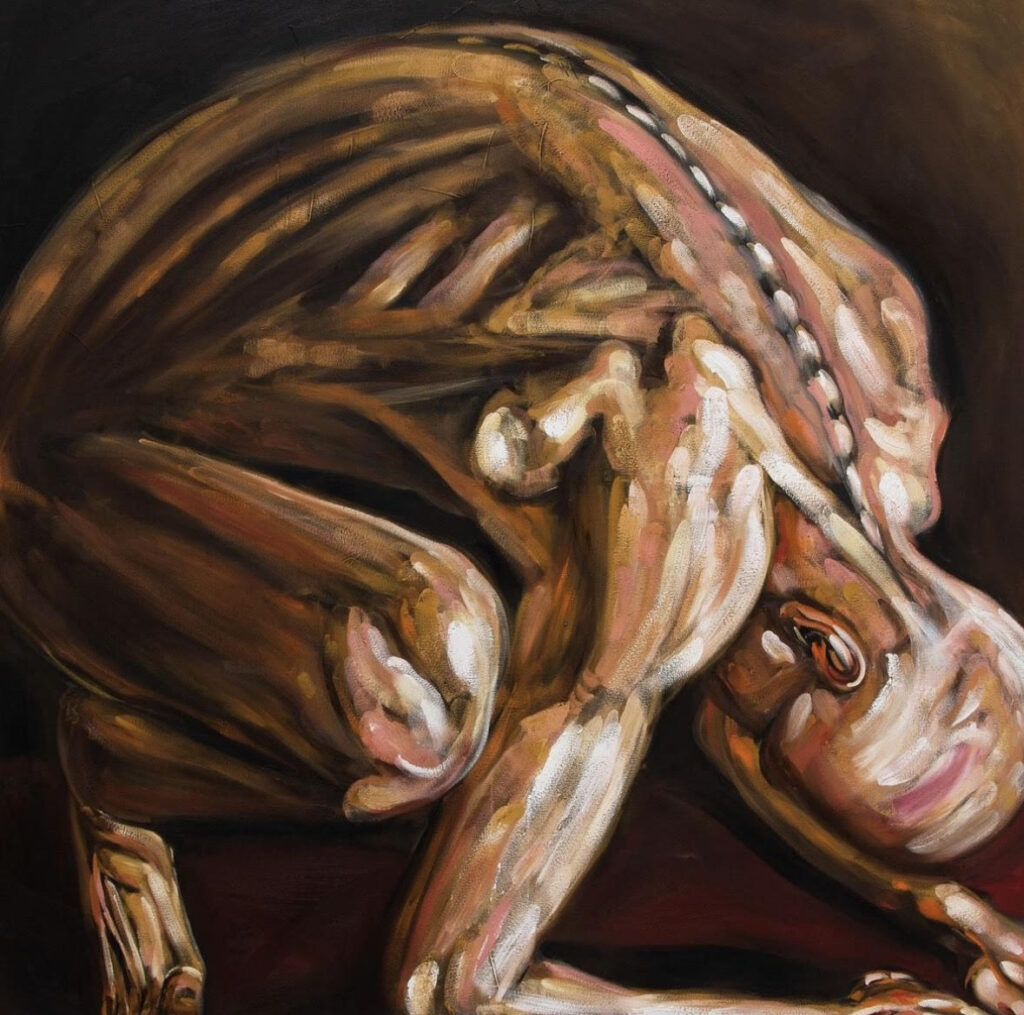
Also, looking at your work, the aesthetic of the paintings themselves are dark in colour. What’s your take on how it effects the viewers? And what are you hoping to convey?
Part of the reason I use the tones that I do is because I think a lot of figurative painting is very flat right now, and I think this is because so much of the way we engage with and see art right now is through a screen or on instagram. I find that by using darker colours I can more easily create a sense of depth in the work, and I am obsessed with creating this kind of illusion through the paint. I want the space my figures exist in to feel eternal, I want them to be flickering in and out of the abyss. I am completely self- taught when it comes to painting, so Ive had to muddle my way into finding my own weird techniques…personally I’ve always worked from dark, or out of darkness.
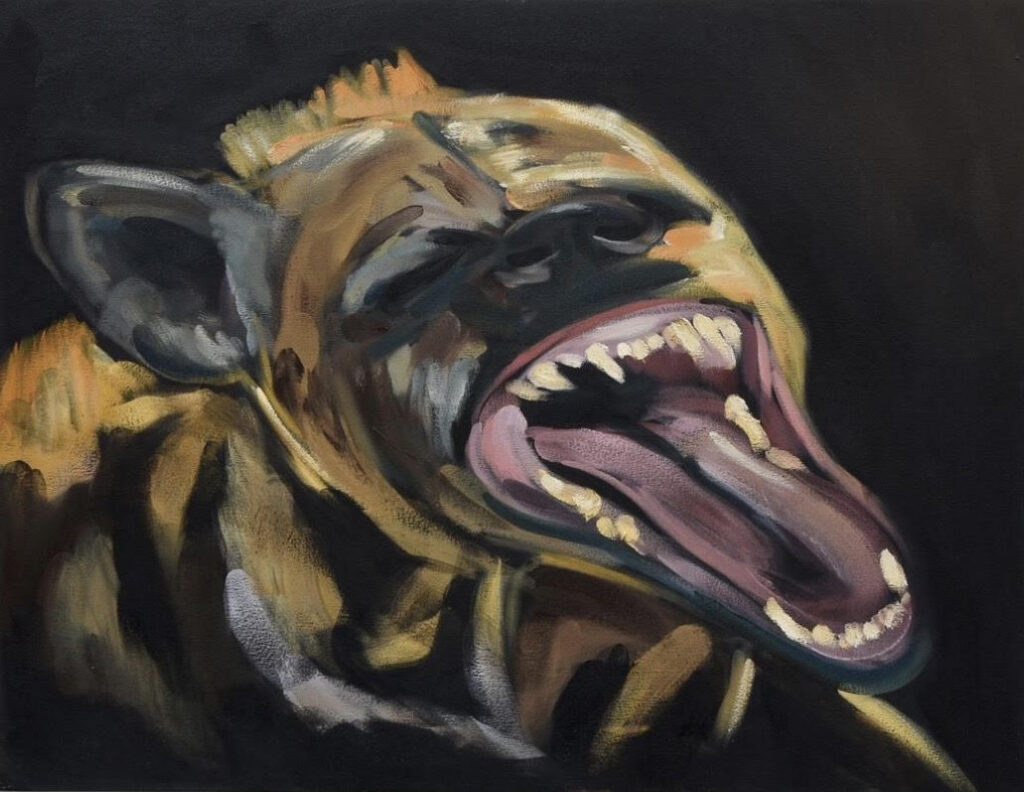
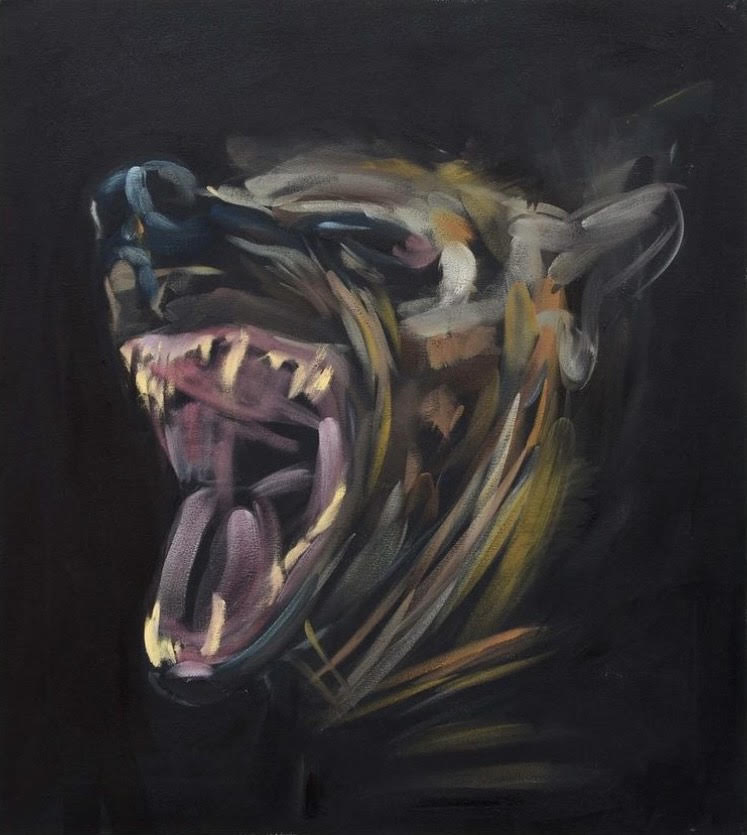
Can you walk me through your creative process. From beginning, to end result?
I try to get to the point as quickly as possible, with as little filler as possible.
You were recently part of a duo with Tim Plamper, at GROVE Berlin, titled “A Tragedy in Three Acts”. How did that come about? And what’s the story behind the title?
I was invited by the gallery to come to Berlin on a residency to work on a body of work for a show over the summer. Whilst I was here I ended up meeting Berlin based artist Tim Plamper, and there was an instant connection between us and our work. It became very clear that we were interested in exploring the same themes but with very different outcomes, and so the show ended up being a duo exhibition. I had never done a duo before but I really enjoyed this experience, and it was a pleasure to see my paintings challenged in the space by Tim’s work – I was grateful for the opportunity to exhibit with him. The title of the show came from a line in Hemingway’s “Death in the Afternoon”, a famous text on bullfighting, where he discusses the bullfight in a more abstract sense, considering the elements of machismo, cruelty, showmanship, and voyeurism that all take place around the act of killing the bull. The “Three Acts” literally refers to how the bullfight takes place over three distinct moments, where the bull is slowly tortured before it is killed by the matador in the third. The “Tragedy” elements plays on this idea of the inevitability of the whole thing. The bull is always doomed from the start.
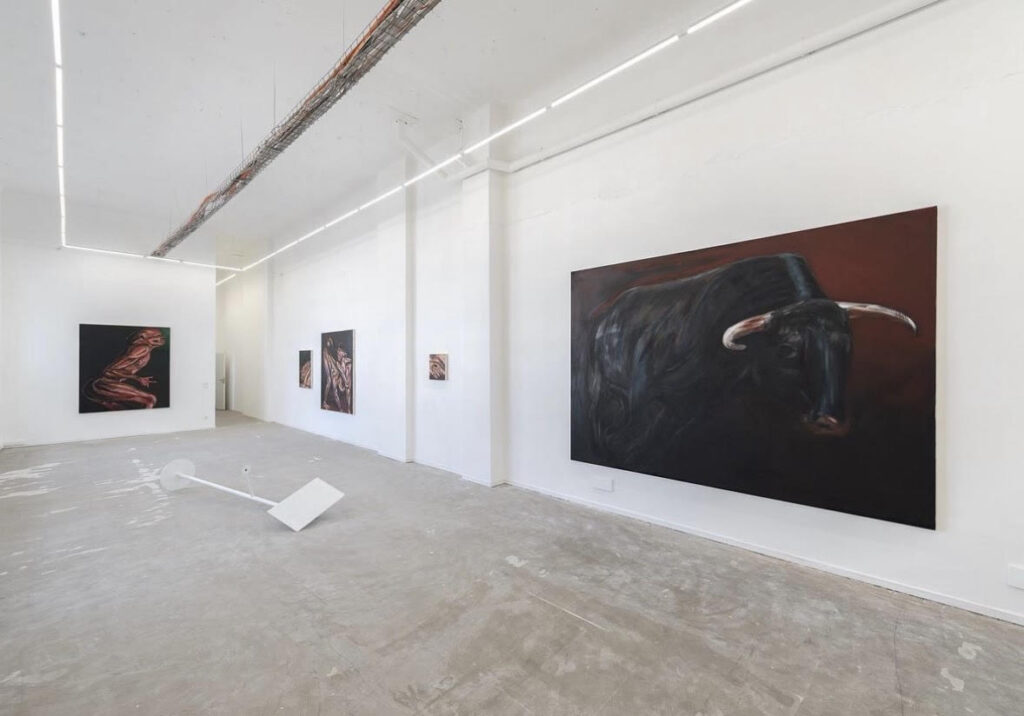
What motivates you?
I want to get better at my craft.
How would you describe a perfect day?
When I feel like things are working in the studio.
Alright Marcus. I always ask these two questions at the end of an interview. The first is. What’s your favorite movie(s) and why?
My favourite of all time is “The Place Beyond the Pines”. Im always inspired by stories of broken or deeply flawed men, and how these flaws end up being passed down through generations – this film gets me every time.
The second is. What song(s) are you currently listening to the most right now?
At the moment I am listening to a lot of Nicholas Britell.
Profile Picture by: Brynley Odu Davies
